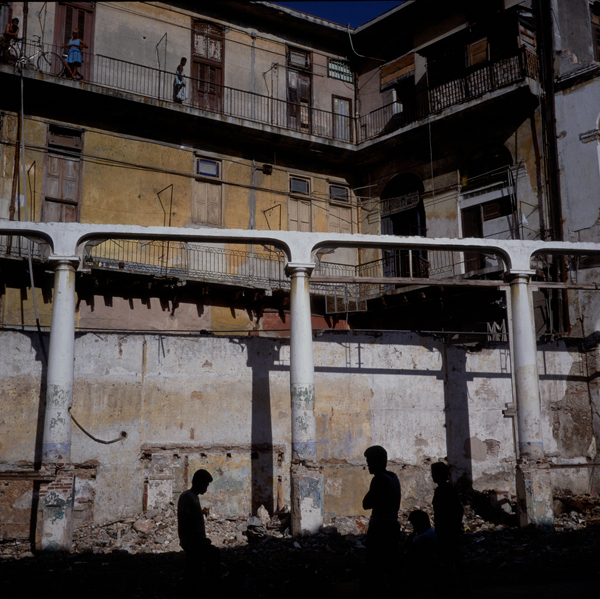
Sombra, 2001. Cibachrome. 120 x 120 cm. Edition 1 of 3. |
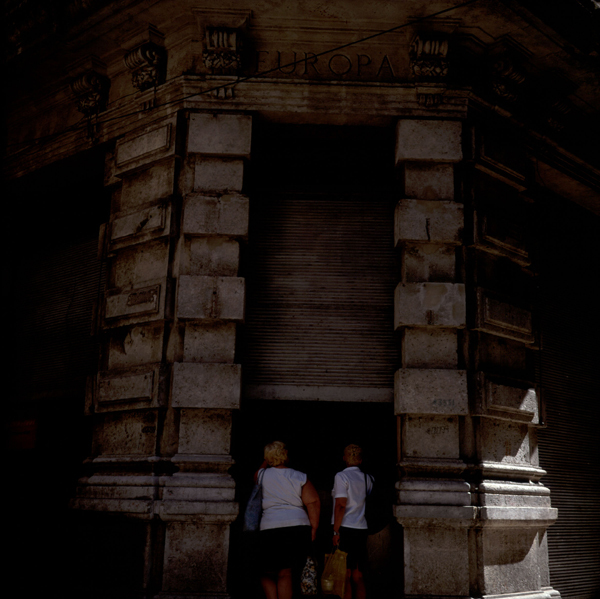
Europa, 2001. Cibachrome. 120 x 120 cm. Edition of 3. |
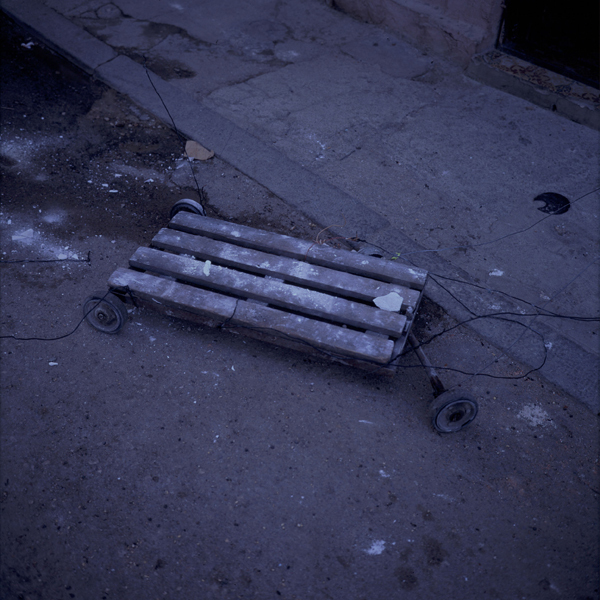
Rodas, 2001. Cibachrome. 120 x 120 cm. Edition of 3. |
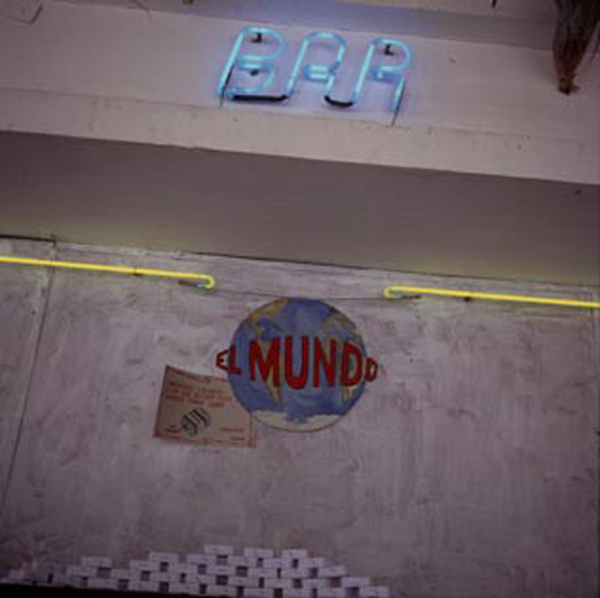
El Mundo, 2001. Cibachrome. 120 x 120 cm. Edition of 3. |
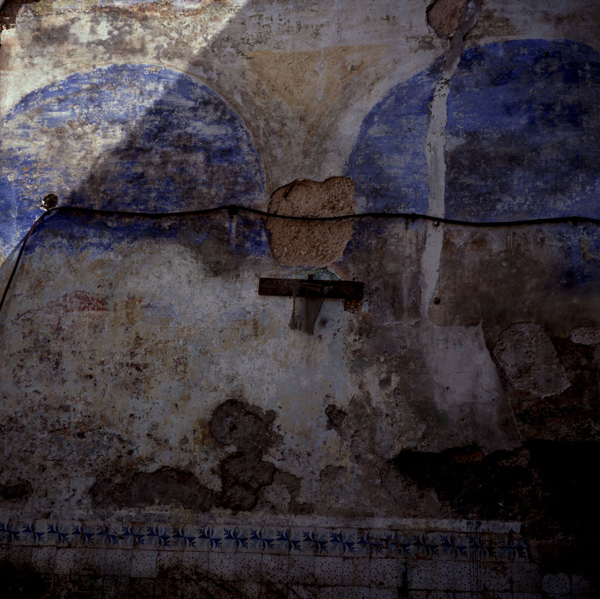
Pared azul, 2001. Cibachrome. 120 x 120 cm. Edition of 3. |
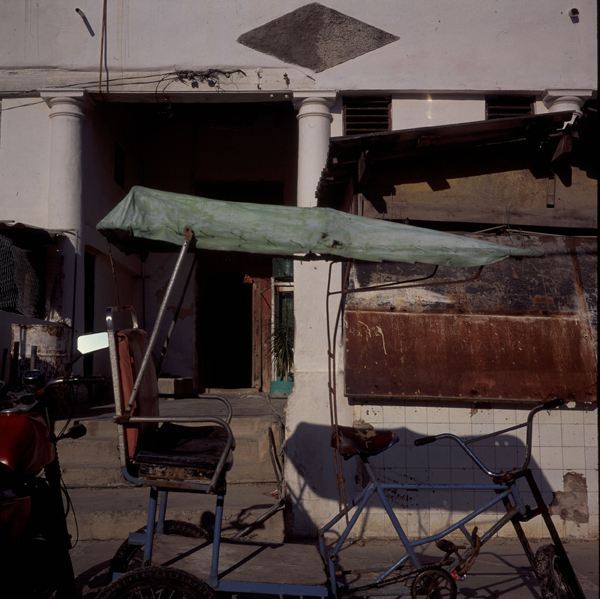
Ferro e velho, 2001. Cibachrome. 120 x 120 cm. Edition of 3. |
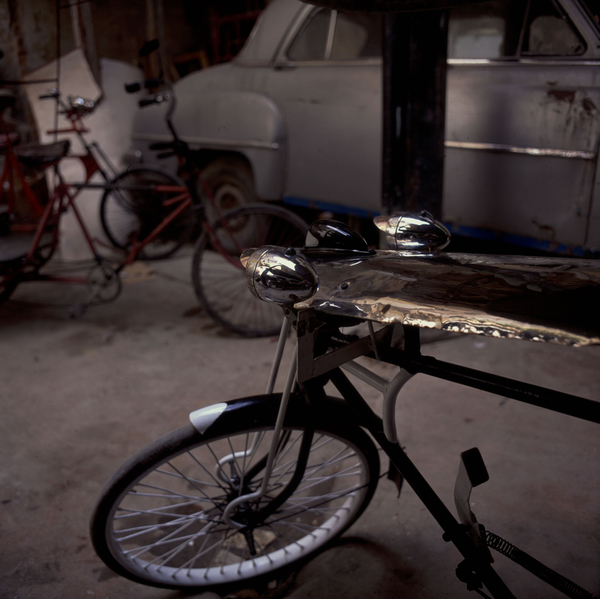
Bicicleta, 2001. Cibachrome. 120 x 120 cm. Edition of 3. |
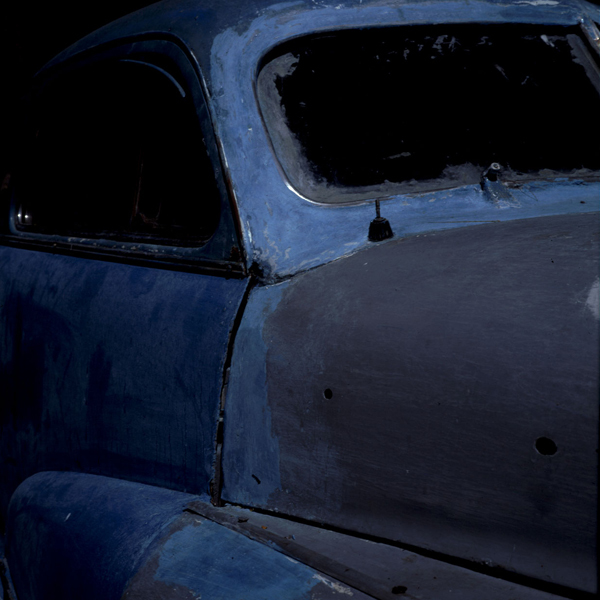
Blue + grey, 2001. Cibachrome. 120 x 120 cm. Edition of 3. |
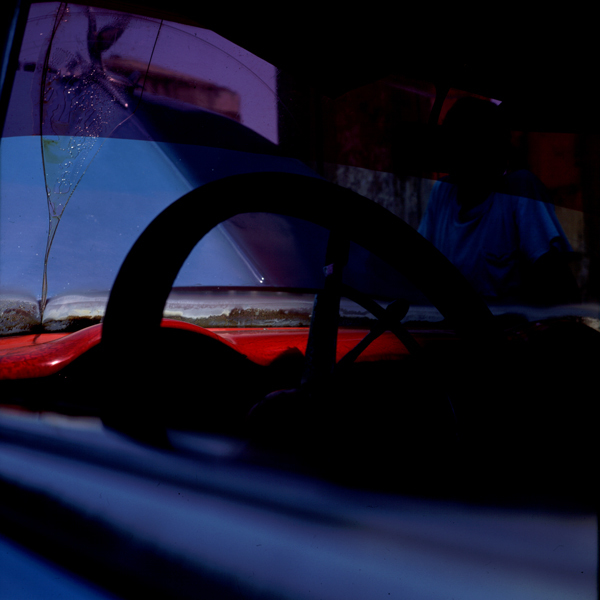
Blue & red, 2001. Cibachrome. 120 x 120 cm. Edition of 3. |
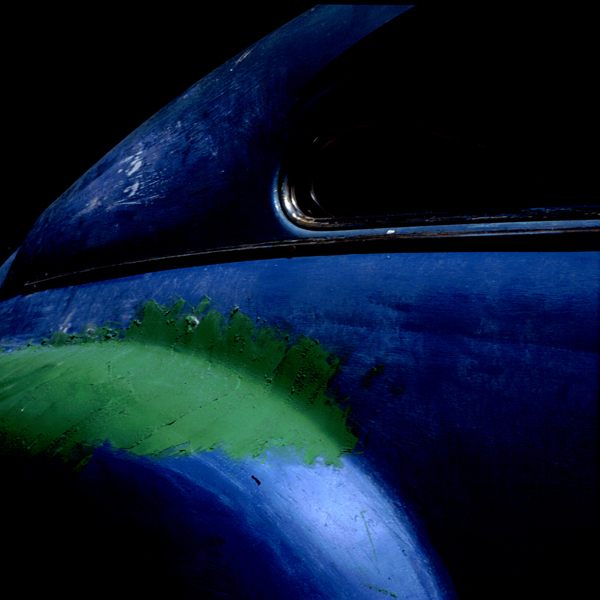
Blue in green, 2001. Cibachrome. 120 x 120 cm. Edition of 3. |
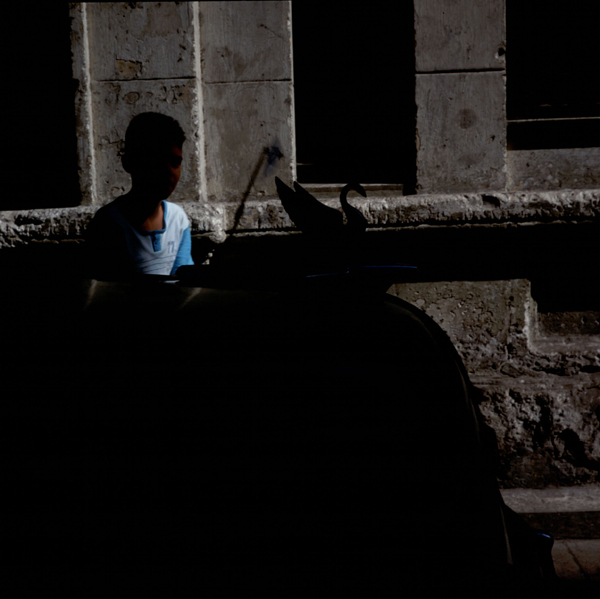
Meninoi cisne, 2001. Cibachrome. 120 x 120 cm. Edition of 3. |
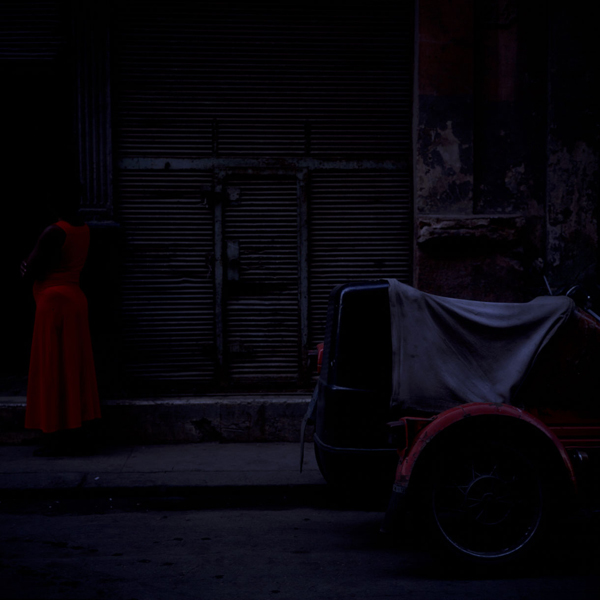
Vestido rojo, 2001. Cibachrome. 120 x 120 cm. Edition of 3. |
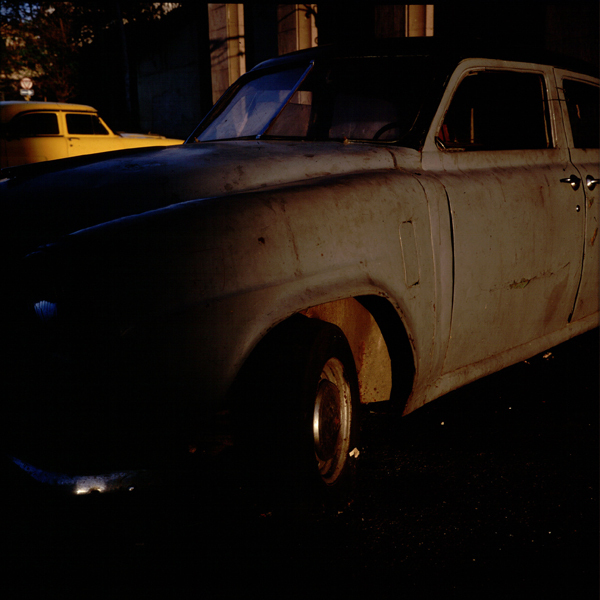
Carro, 2001. Cibachrome. 120 x 120 cm. Edition of 3. |
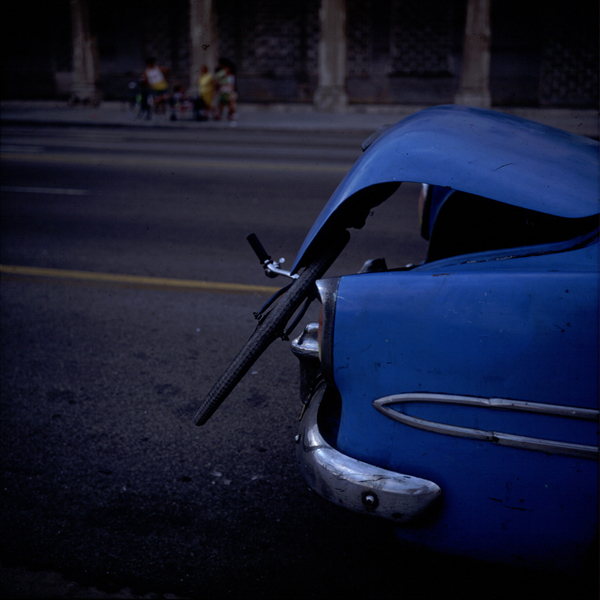
Carro e bicileta, 2001. Cibachrome. 120 x 120 cm. Edition of 3. |
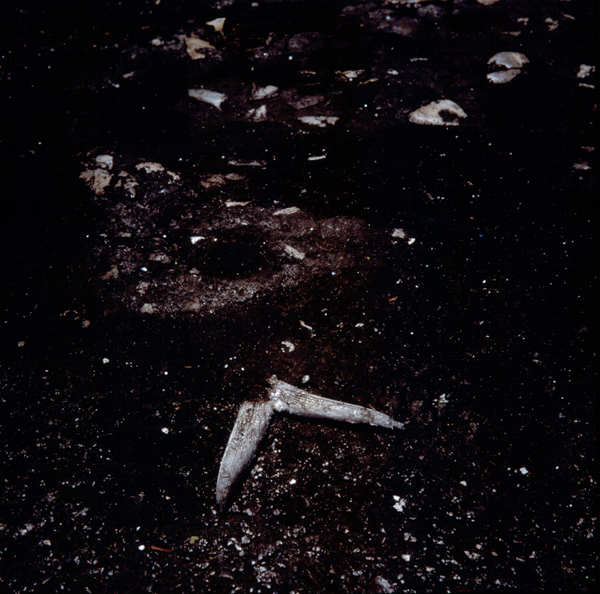
Rabo de peixe, 2001. Cibachrome. 120 x 120 cm. Edition of 3. |
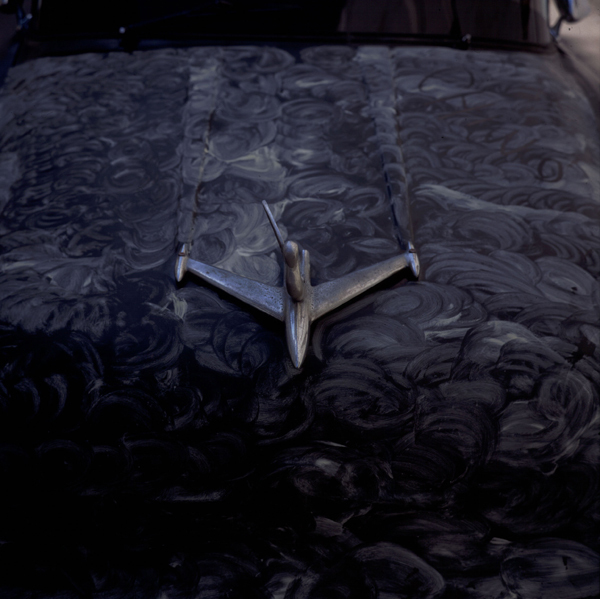
Aviao, 2001. Cibachrome. 120 x 120 cm. Edition of 3. |
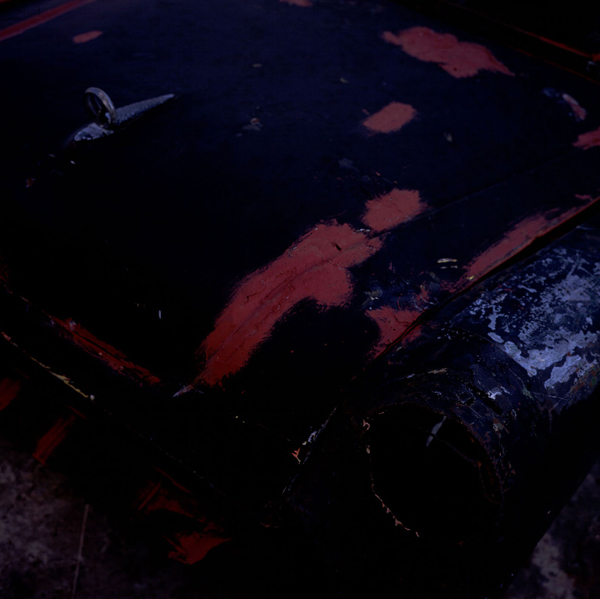
Carro vermelho 2, 2001. Cibachrome. 120 x 120 cm. Edition of 3. |
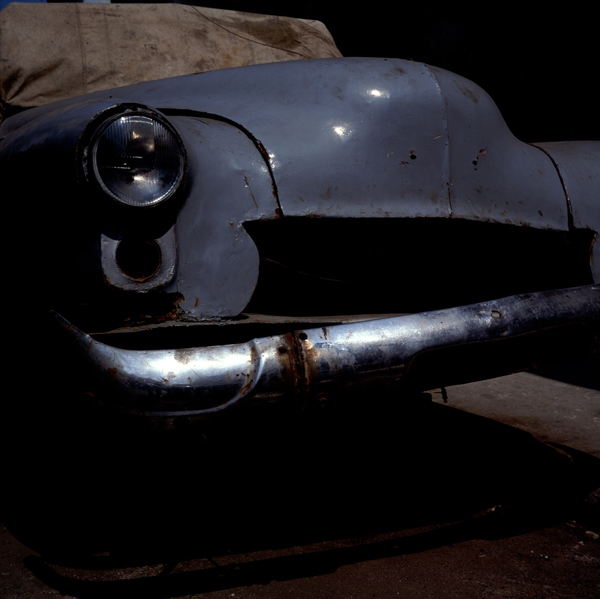
Carro 2, 2001. Cibachrome. 120 x 120 cm. Edition of 3. |
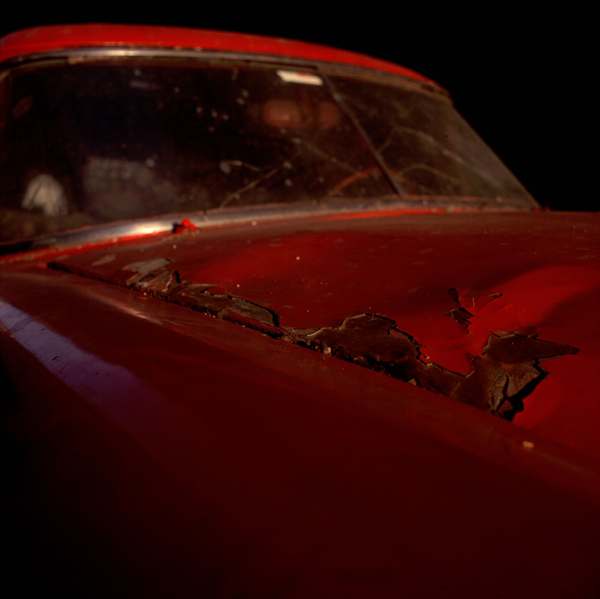
Carro vermelho, 2001. Cibachrome. 120 x 120 cm. Edition of 3. |
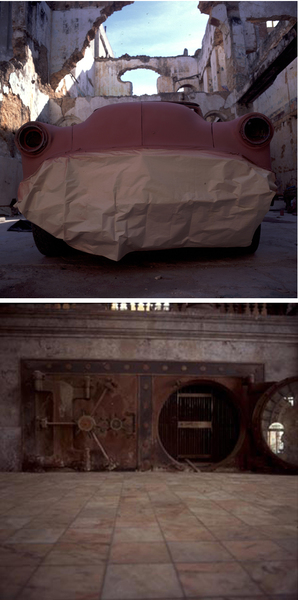
Caja fuerte (diptych), 2001. Cibachrome. 120 x 120 cm. each. Edition of 3. |
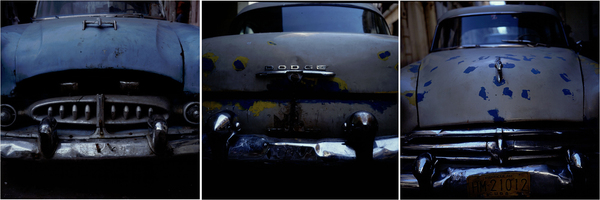
Tres rostros amasados y azules (triptych), 2001. Cibachrome. 120 x 120 cm. each. Edition of 3. |
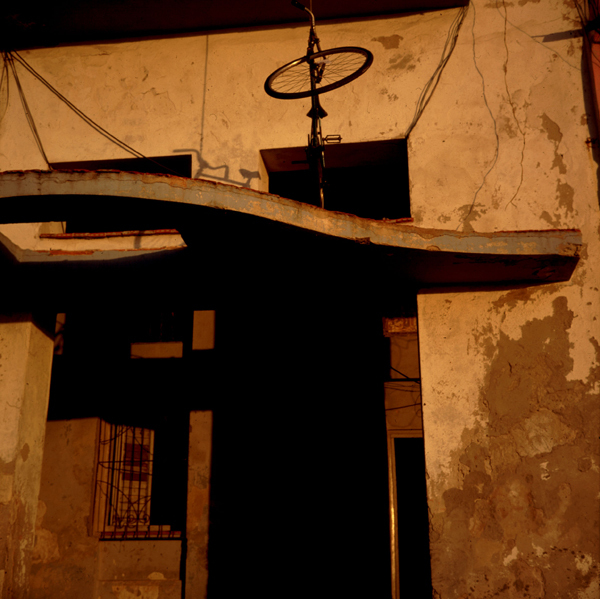
Fachada bicicleta, 2001. Cibachrome. 120 x 120 cm. Edition of 3. |
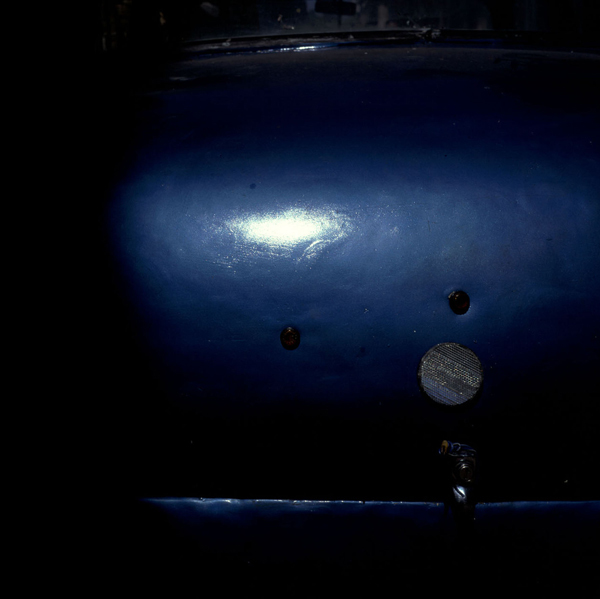
Carro reflexo, 2001. Cibachrome. 120 x 120 cm. Edition of 3. |
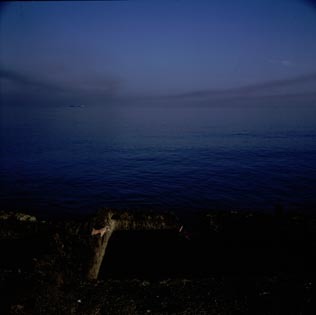
Mar 2, 2001. Cibachrome. 120 x 120 cm. Edition of 3. |
Next 25th of January we will open the fourth individual exhibition of Miguel Rio Branco in the Gallery Oliva Arauna, Spain.
For this occasion we will show 27 colour cibachrome photographs of 120x120 cm. All of the images were taken in La Havana between the years 1994-2001.
Miguel Rio Branco recreates highly dramatic situation which symbolise loneliness and pain. His still lifes (objects found in the street, notches in the wall, cars) bear silent witness to the life that goes on the fringes of society. The formal elements at play here, those associated with architecture, and site, colours, shadows and light; will be used to write and speak of sensuality and poetry, because his work is not just a document; it is a visual gloss, a poetry interpretation of reality. His images speak of the real in a personal, oblique manner, thus exploring and offering themselves as the only possible means of the representation of the real: poetry.
Rio Branco started working professionally with film in 1969, and up until 1972 he directed five super –8 films and began to work as cinematographer with Brazilian directors, such as Julio Bressane, Antonio Calmon and Luis García Goes. It was only 1972 that he started to exhibit photographs. Since then, he has been working with painting, photography and installations. Rio Branco has being a correspondent for Magnum since 1980, and his photographic work has being published in magazines such as Aperture, National Geographic and Photo Magazine.
Miguel Rio Branco had his first solo exhibition in Bern in 1964 and, since then, he has had numerous shows in Museums and Galleries of cities such as New York, Rio de Janeiro, Lisboa, Buenos Aires, Tel-Aviv, Venezia, Rotterdam, Bonn, Caracas, Frankfurt, Berlín, London, Athens or San Francisco. His big last individual exhibitions took place in Arles in the Reencontres d´Arles during July 2005 and in Paris in the Maison Européene de la Photographie last November 2005.

